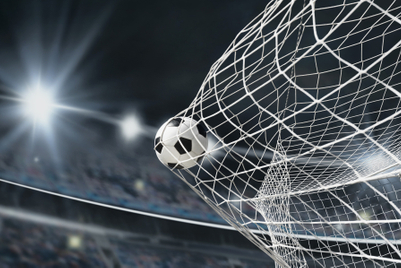
Qatar 2022 was the first World Cup in the Middle East, the first World Cup in winter and was hosted by the smallest country ever to have staged the tournament.
The media coverage in the weeks leading up to the World Cup, or any major international event, are often filled with stories around preparedness, security and what travelling fans can expect.
This year, in addition to those traditional storylines, there was significant attention focused, rightly, on the human rights record of the host country and reliving the controversy surrounding the awarding of the tournament to Qatar in the first place.
The controversies surrounding this World Cup have presented brands, official sponsors and those simply looking to capitalise on a massive global sporting moment with a dilemma. But with the tournament now over, how have brands actually navigated this World Cup?
Initially, the outlook wasn’t promising. The timing of the 2022 World Cup presented some unique challenges, competing with the preparations for the holiday season. In a typical year, more than 35,000 advertisers are active in the lead up to Christmas.
The Christmas advertising push combined with the pressure on advertising around the world’s most-watched sporting event meant that availability and pricing were a challenge for brands.
And, it’s safe to say, brand presence was substantially more muted than in years past. Some of this can certainly be explained by the clash with the Christmas advertising window.
Additionally, the placement of the World Cup in the middle of the football season has thrown off the traditional summer build-up for many brands that potentially are trying to determine investment levels across multiple football competitions.
Despite all the challenges and the negative coverage leading up to this year’s tournament, fans from around the world still tuned in. England’s defeat to France brought in 20.4 million peak views.
This, along with long-standing sponsorship agreements, mean major global brands were able to engage football fans from around the world.
So, how did brands cut through the festive noise and controversy to navigate this year’s World Cup?
Not all negative press is bad
One of the most notorious brand crises, at least on the surface, was Qatar’s U-turn on beer sales in stadiums. As the story broke, everyone’s eyes turned to one of the main sponsors, Budweiser.
Despite the headlines, the value of beer sales was tiny relative to huge global media and use of IP that Bud could use through the line, including retail.
For Budweiser, it was a blessing in disguise. It turned around its marketing to focus on the post-tournament experience, promising a huge victory party for the winning country, with the campaign '#BringHomeTheBud'.
Cleverly, it used the U-turn to create a new campaign and bring in heightened sponsorship awareness, even on top of the massive coverage from the initial controversy.
In a strange way, outside Qatar, it probably helped its sponsorship awareness. Anyone reading the news would learn that Bud was the official beer sponsor.
A focus on togetherness and occasion
From the outset of the activations, we could see brands distancing themselves from the host country.
In the past, official sponsors have tended to focus on the World Cup and the host country itself, because their exclusive rights as a partner of the competition meant they alone could refer to the tournament, or use official IP such as logos or trophy imagery.
In many ways, partners of the World Cup this year have been activating in ways similar to non-sponsors, with only fleeting mentions of the tournament and less use of official IP.
Adidas focused on the “Family reunion” using its relationships with many of the world’s most iconic players competing in the World Cup.
This is in contrast to its ads in the lead-up to the Brazil 2014 World Cup, which featured players and iconic imagery from Brazil as the host country.
Official sponsor Coca-Cola focused on the occasion of the tournament in a series of ads highlighting togetherness and anticipation of the matches, rather than referencing where it was being staged.
Ultimately, much of the hesitation and doubt that brands may have felt prior to the tournament is at least partially dispelled now.
Once the football started, much of the public discourse around the host country faded into the background.
Most football fans were simply looking forward to the final – and the Premier League starting again on Boxing Day.
Brands can be reassured that if the event they are sponsoring is entertaining enough, it is still worth playing the game on the biggest world stage.
James English is a partner at Fuse.




.jpg&h=334&w=500&q=100&v=20250320&c=1)
.jpg&h=334&w=500&q=100&v=20250320&c=1)



.jpg&h=334&w=500&q=100&v=20250320&c=1)
.png&h=334&w=500&q=100&v=20250320&c=1)








